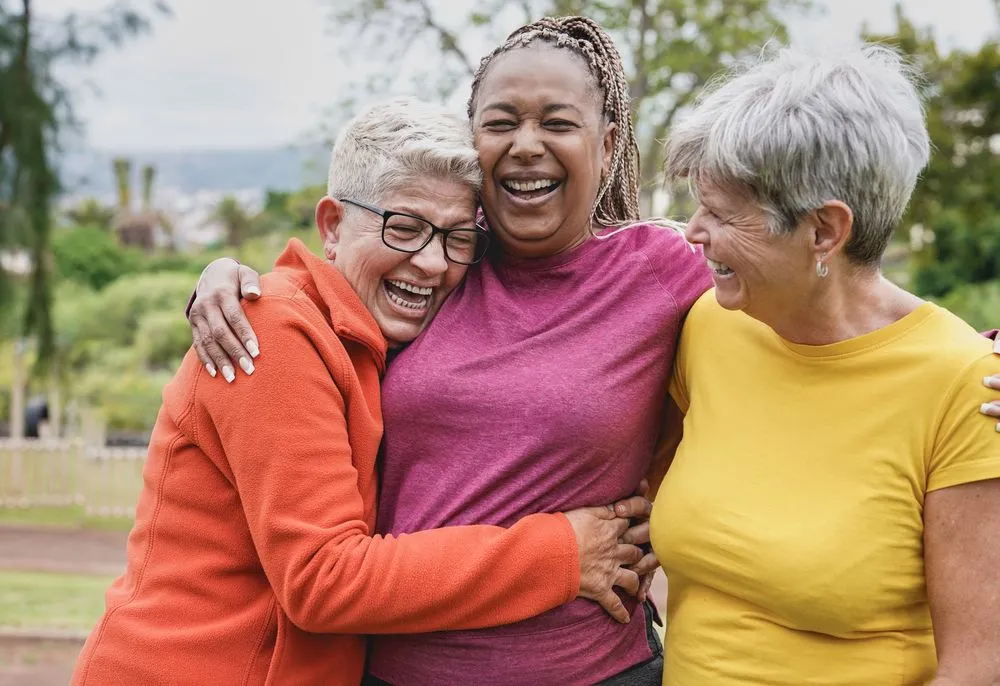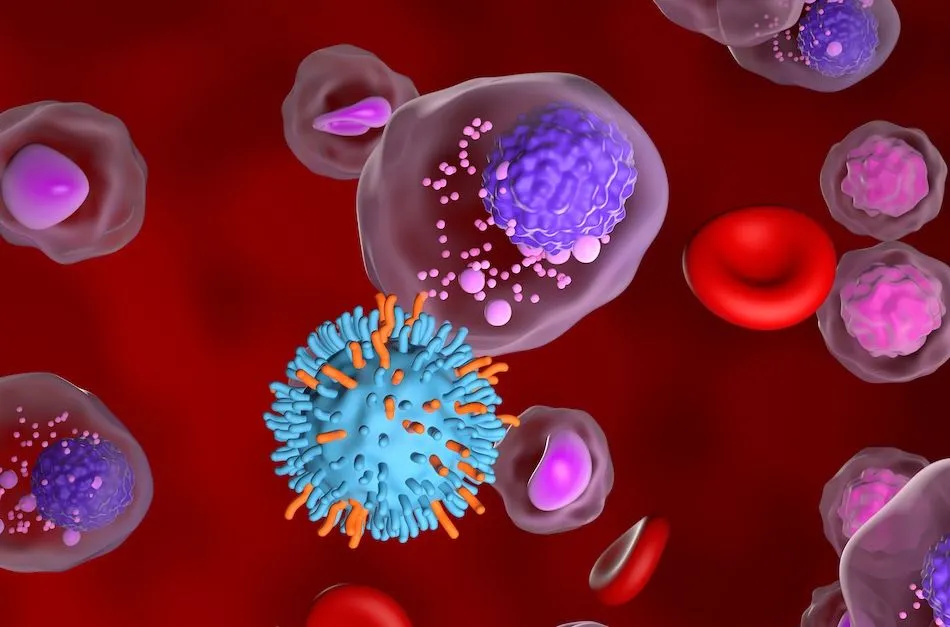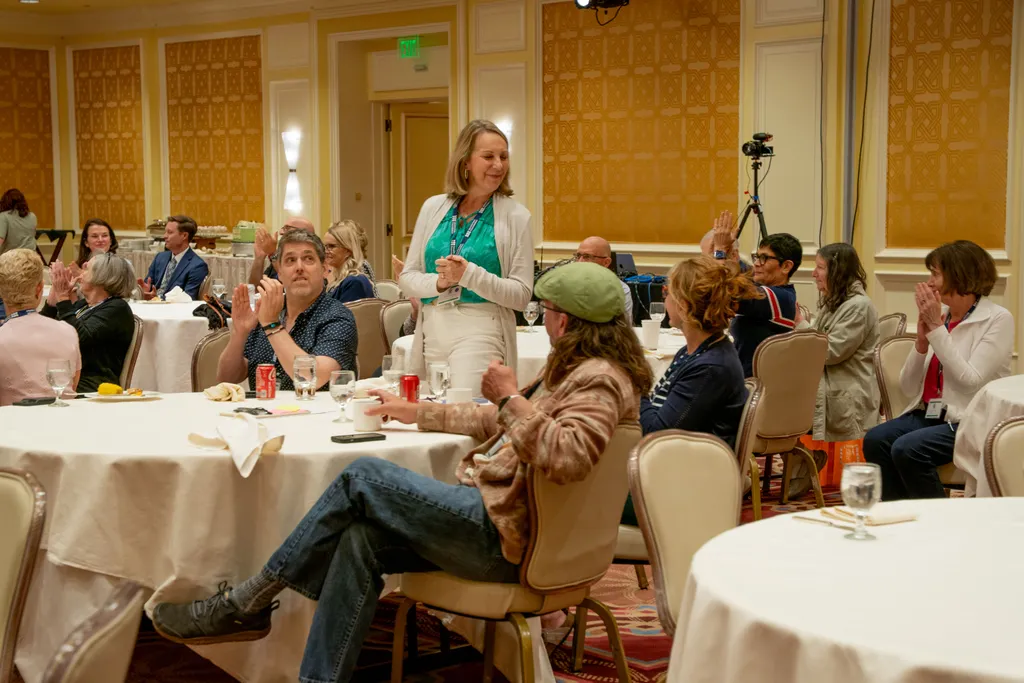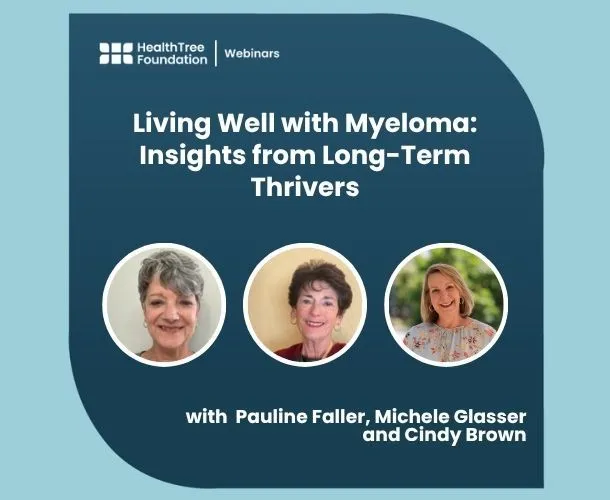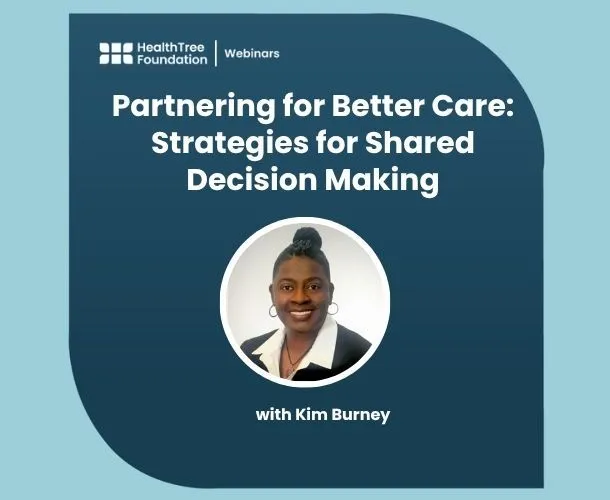MCRT Webcast: American Society of Hematology Meeting Review (Part 1)

The annual American Society of Hematology (ASH) meeting is the most important scientific meeting of the year for the hematology community. It is held annually in early December and attracts more than 30,000 attendees from throughout the world who get information on the latest, most important studies in their respective fields of interest. For myeloma specialists, it updates the standards of clinical practice for the coming year and informs them about the latest research activities ranging from basic biology to advanced clinical trials. The two part Myeloma Crowd Round Table (MCRT) featured six myeloma experts who reviewed a variety of ASH studies that will impact clinical care today and in the coming year.
Drs. Adam Cohen, Ashraf Badros, and Noopur Raje were featured in part one of the MCRT webcast on Saturday, January 30:
Adam Cohen, MD, Abramson Cancer Center, University of Pennsylvania, Philadelphia, PA: CAR T Cell Therapy for Multiple Myeloma
- All the cells in blood come from the hematopoietic stem cell (HSC), which is collected for a stem cell transplant
- One of two lineages HSCs produce are common lymphoid progenitors which create the immune system which is made up of natural killer (NK) cells, B cells and T cells
- T cells are unique cells that recognize other cells in the body that become infected
- T cells develop “memory” to recognize and respond to pathogens
- Sometimes they can kill cancer cells, but over time cancer cells learn to evade T cells
- Approaches to overcome this evasion include:
- Checkpoint inhibitors have been effective in solid tumors by “waking up” exhausted T cells, not shown to be as effective in blood cancers
- Cellular therapies, when T cells are re-engineered to recognize cancer known as CAR T (chimeric antigen receptor)
- Bispecific antibodies/T cell engagers (BiTEs) are discussed below
- CAR T cells have the “head” of an antibody and the “body and tail” of a T cell receptor, which allows T cells to grow and divide create a “memory” to kill cancer cells
- A vector is needed to get CAR gene into T cell, most often derived from viruses that have disease-causing “guts” taken out
- CARs create cytotoxicity, or killing, by producing cytokines, which communicate with other cells in the immune system
- This creates a living drug with long term persistence that only needs to be infused once
- CAR T cell therapy process:
- Leukapheresis, taking T cells out of body
- Activate T cells and grow, infuse back into patient after chemotherapy
- First shown to be successful in B cell cancers
- Short video on first pediatric patient treated here
- Side effects of CAR T cell therapy:
- Cytokine release syndrome (CRS), when cytokines mimic infection and become over-activated
- Neurologic toxicity
- Tocilizumab, an anti-IL6 receptor antibody, treats severe CRS
- Early CAR T studies in myeloma target BCMA, which is a target highly expressed in myeloma cells
- Four studies demonstrated responses in 63-90% of patients
- Two CAR T products are moving toward FDA approval
- bb2121, now called idecabtagene vicleucil (ide-cel) is awaiting FDA approval
- KarMMa clinical trial, showed 73% overall response rate (ORR) and 33% complete remission (CR) in heavily-treated patients, 84% who were at least triple refractory to standard treatments
- Mostly manageable side effects, durable survival rates in short time observed
- Ciltacabtagene autoleucel (cilta-cel), still in FDA review process
- CARTITUDE-1 clinical trial of 97 heavily-treated patients, 67% achieved a stringent CR (sCR), many demonstrated MRD negativity
- Side effects were more delayed, slight more than ide-cel
- Learn more in the MCRT on CAR T Cell Therapy
Ashraf Badros, MD, Greenebaume Comprehensive Cancer Center, University of Maryland, Baltimore, MD: Integrating Monoclonal Antibodies with Backbone Therapies
- Iberdomide is a next generation IMiD, the category of drugs that included lenalidomide (Revlimid ®) and pomalidomide (Pomalyst ®)
- A new class of drugs called CELMoDs (Cereblon E3 Ligase Modulation Drugs)
- Has a 20-fold binding affinity to cereblon, a protein to which IMiDs bind, than Len or Pom
- Degrades proteins that inhibit anti-myeloma activity
- Stimulates immune system
- Studies indicate it can be effective in patients who are resistant to Len or Pom
- Two ASH studies featured iberdomide in combination, one with daratumumab (DARZALEX ®), the other with bortezomib (Velcade ®), both with dexamethasone (dex)
- Both had a favorable side effect profile, promising anti-myeloma effects and approval is anticipated early next year
- Selinexor (XPOVIO ®), an oral drug, inhibits transport of toxic proteins in myeloma cells
- Initial experience was disappointing: STORM clinical trial combined selinexor with dex in heavily treated patients had low ORR and significant side effects
- BOSTON clinical trial combined selinexor with Velcade and dex (Vd), found that older patients tolerated combination well, were able to stay in remission longer, and did well with high-risk patients
- STOMP clinical trial demonstrated selinexor had positive synergistic effects when combinations with either carfilzomib (Kyprolis ®), Len (Vd) or Pom (Pd)
- Antibodies targeting proteins on myeloma cells (BCMA, CD-38, SLAM-7)
- Naked: drugs with nothing else attached like daratumumab and isatuximab (for CD-38) and elotuzumab (for SLAM-7)
- Antibody drug conjugates (ADC): have toxins or radioactive isotopes attached to bind with myeloma cells
- Bispecifics: will be discussed in Part Two
- Belantamab Mafodotin (belamaf or BLENREP ®) is an ADC that targets BCMA and delivers toxin to myeloma cell
- DREAMM-1 and DREAMM-2 studies on belamaf as a single-agent found it could overcome high-risk cytogenetics and renal failure/insufficiency
- Major side effect was corneal events, a dryness of eyes called keratopathy, most are reversible with delayed treatment, which does not impact efficacy
- Combinations with Pd and Vd being studied
- Selected conclusions (see video for full charts):
- Selinexor with Vd is a good option for first relapse for frail patients who are refractory to lenalidomide (Revlimid ®)
- Belamaf is a good option for second or more relapse for patients with good organ function
- Clinical trials in CAR T, bispecifics or iberdomide should also be considered
- Learn more about selinexor in the MCRT on Novel Therapies and about belamaf and iberdomide in the MCRT on Therapies on the Horizon
Noopur Raje, MD, Massachusetts General Hospital, Boston, MA: Advances in Supportive Care/COVID and Vaccinations
- Bone disease impacts nearly 100% of myeloma patients
- Imaging with whole body, low-dose CT scan is becoming standard
- For more information about imaging, please see the MRCT on Imaging and Dr. Raje’s comments in the MCRT on Bone Issues
- Denosumab (XGEVA ®) inhibits the RANK ligand, which promotes bone destruction
- Has equivalent bone strengthening to Zometa ®, but has slightly better progression-free survival (PFS)
- Preferred for patients with kidney issues
- Calcium and vitamin D supplements are recommended
- CAR T cells
- Ide-cel (see Dr. Cohen’s presentation above), patients who achieved MRD negativity had longer survival rates
- Positive results in heavily pretreated patients, CRS is manageable in 90% of patients
- Orvacabtagene autoleucel EVOLVE study ongoing
- No good answer yet about which CAR for which patient
- COVID-19
- Cancer patients with COVID and active disease have worse outcomes
- Mortality rates are higher in patients with plasma cell disorders
- Risk factors associated with death are age, high-risk disease, renal disease, and less control of myeloma
- Risk factors associated with risk of hospitalization include being male, having cardiovascular risk, and not being in CR or sCR
- General guidelines for myeloma patients
- Self education, understand your individual risks, use telemedicine when possible
- Use oral drugs whenever possible, reschedule procedures, reduce dex
- Keep disease under control
- No data to avoid specific drugs
- Vaccines
- mRNA vaccines (Pfizer and Moderna) are available
- Recently approved Johnson and Johnson vaccine is not inferior for patients
- Take any vaccine that is available
- Maintain use of masks, social distancing, reduce possibility of exposure
Audience Questions & Answers
- 0:55 - What will the cost of iberdomide be as compared to currently used IMiDs and is it an oral medication?
- 1:31 - Will iberdomide and other CELMoDs replace currently used IMiDs in maintenance?
- 3:32 - Does CAR T make tumors smaller (de-bulk) or will the therapy need other drugs to help?
- 5:43 - Do patients with lower tumor burdens have better results with CAR T therapy?
- 8:13 - Is there an age cutoff for CAR T?
- 9:45 - How do response rates differ between BiTEs and Car Ts?
- 11:05 - What should patients who are refractory to the three main classes of drugs used in myeloma consider?
- 13:59 - From a patient who had CAR T therapy in 2018 and is still MRD-: If relapse occurs, is there a way to determine if it is related to persistence of loss of BCMA as she determines therapy options?
- 16:10 - Are there secondary targets to consider if CAR T doesn’t work of if BCMA is no longer present?
- 18:14 - If a patient has osteoporosis before a myeloma diagnosis, what’s the right strategy for bone strengthening agents with lytic lesions or bone problems at diagnosis?
- 19:34 - How does one decide between a CAR T vs. a BiTE vs. an antibody drug conjugate?
- 22:49 - Can the JnJ vaccine be taken later if one had had the Pfizer vaccine? And if one gets COVID, how long should one wait to have a vaccine? Or after treatment?
Questions Answered in Chat Forum
- Is age a bar to CAR T treatment? I am 76 and had an autologous stem cell transplant in 2016.
Dr. Cohen answered: There is no upper age limit - it really depends on overall medical condition/co-morbidities. Patients with advanced heart failure or lung disease would not be candidates but we've treated patients well into their late 70s and there's no reason a healthy 80-ish year old couldn't consider CAR T cells.
- How does disease PFS with CAR-T cells compare between those who had complete remission (MRD negative) and those who were VGPR or just partial remission?
Dr. Borrello answered: In general, the data has shown that the deeper the response, the better the PFS. The same results also appear to be applicable for the depth of response with CAR-T cells.
- Re: DREAMM-2: "Most recoveries occurred on treatment" was stated. By doing what...dosage reduction, dosage hold, nothing?
Dr. Badros answered: Hold therapy until resolution or less than grade 1, and if recurrent/persistent, decrease the dose from 2.5 to 1.9 mg/kg. Most patients will have 1-2 delays. And such delays did not lead to loss of response.
- Is there a significant difference in effectiveness between oral or IV dexamethasone?
Dr. Borrello answered: Not really. They are interchangeable.
- What is standard care post autologous transplant?
Dr. Borrello answered: Most would recommend Revlimid as maintenance post-auto but there could be modifications to this based on an individual's unique characteristics.
- Are we moving toward stem cell transplant no longer being a standard of care, particularly in a time of active Covid-19?
Dr. Raje answered: No, stem cell transplant still the standard of care.
- Do you foresee a time when CAR T therapy will be done first (before SCT) for newly diagnosed patients? If so, how far in the future?
Dr. Raje answered: Yes, we are already doing so in cases of high-risk disease.
- After someone has received two Covid vaccinations, can they still get a mild case or be asymptomatic and infectious to others? Would they be less infectious than someone who was never vaccinated?
Dr. Raje answered: You can still transmit the infection but you will get less severe disease, therefore it is important to mask up and social distance.
Thanks to our Round Table sponsors
 .
.  .
.  .
. 
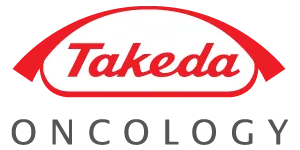 .
.  .
. 
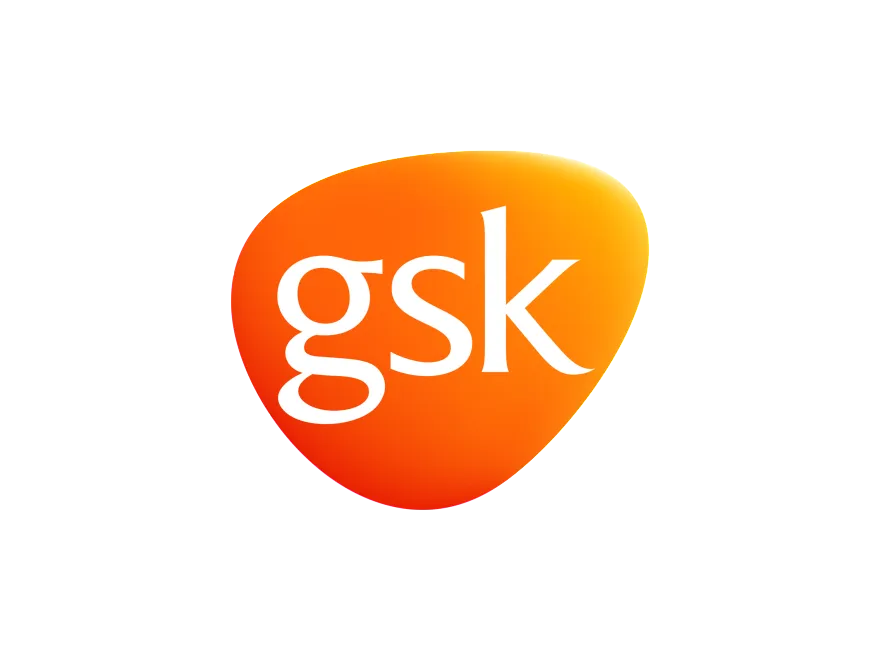

The annual American Society of Hematology (ASH) meeting is the most important scientific meeting of the year for the hematology community. It is held annually in early December and attracts more than 30,000 attendees from throughout the world who get information on the latest, most important studies in their respective fields of interest. For myeloma specialists, it updates the standards of clinical practice for the coming year and informs them about the latest research activities ranging from basic biology to advanced clinical trials. The two part Myeloma Crowd Round Table (MCRT) featured six myeloma experts who reviewed a variety of ASH studies that will impact clinical care today and in the coming year.
Drs. Adam Cohen, Ashraf Badros, and Noopur Raje were featured in part one of the MCRT webcast on Saturday, January 30:
Adam Cohen, MD, Abramson Cancer Center, University of Pennsylvania, Philadelphia, PA: CAR T Cell Therapy for Multiple Myeloma
- All the cells in blood come from the hematopoietic stem cell (HSC), which is collected for a stem cell transplant
- One of two lineages HSCs produce are common lymphoid progenitors which create the immune system which is made up of natural killer (NK) cells, B cells and T cells
- T cells are unique cells that recognize other cells in the body that become infected
- T cells develop “memory” to recognize and respond to pathogens
- Sometimes they can kill cancer cells, but over time cancer cells learn to evade T cells
- Approaches to overcome this evasion include:
- Checkpoint inhibitors have been effective in solid tumors by “waking up” exhausted T cells, not shown to be as effective in blood cancers
- Cellular therapies, when T cells are re-engineered to recognize cancer known as CAR T (chimeric antigen receptor)
- Bispecific antibodies/T cell engagers (BiTEs) are discussed below
- CAR T cells have the “head” of an antibody and the “body and tail” of a T cell receptor, which allows T cells to grow and divide create a “memory” to kill cancer cells
- A vector is needed to get CAR gene into T cell, most often derived from viruses that have disease-causing “guts” taken out
- CARs create cytotoxicity, or killing, by producing cytokines, which communicate with other cells in the immune system
- This creates a living drug with long term persistence that only needs to be infused once
- CAR T cell therapy process:
- Leukapheresis, taking T cells out of body
- Activate T cells and grow, infuse back into patient after chemotherapy
- First shown to be successful in B cell cancers
- Short video on first pediatric patient treated here
- Side effects of CAR T cell therapy:
- Cytokine release syndrome (CRS), when cytokines mimic infection and become over-activated
- Neurologic toxicity
- Tocilizumab, an anti-IL6 receptor antibody, treats severe CRS
- Early CAR T studies in myeloma target BCMA, which is a target highly expressed in myeloma cells
- Four studies demonstrated responses in 63-90% of patients
- Two CAR T products are moving toward FDA approval
- bb2121, now called idecabtagene vicleucil (ide-cel) is awaiting FDA approval
- KarMMa clinical trial, showed 73% overall response rate (ORR) and 33% complete remission (CR) in heavily-treated patients, 84% who were at least triple refractory to standard treatments
- Mostly manageable side effects, durable survival rates in short time observed
- Ciltacabtagene autoleucel (cilta-cel), still in FDA review process
- CARTITUDE-1 clinical trial of 97 heavily-treated patients, 67% achieved a stringent CR (sCR), many demonstrated MRD negativity
- Side effects were more delayed, slight more than ide-cel
- Learn more in the MCRT on CAR T Cell Therapy
Ashraf Badros, MD, Greenebaume Comprehensive Cancer Center, University of Maryland, Baltimore, MD: Integrating Monoclonal Antibodies with Backbone Therapies
- Iberdomide is a next generation IMiD, the category of drugs that included lenalidomide (Revlimid ®) and pomalidomide (Pomalyst ®)
- A new class of drugs called CELMoDs (Cereblon E3 Ligase Modulation Drugs)
- Has a 20-fold binding affinity to cereblon, a protein to which IMiDs bind, than Len or Pom
- Degrades proteins that inhibit anti-myeloma activity
- Stimulates immune system
- Studies indicate it can be effective in patients who are resistant to Len or Pom
- Two ASH studies featured iberdomide in combination, one with daratumumab (DARZALEX ®), the other with bortezomib (Velcade ®), both with dexamethasone (dex)
- Both had a favorable side effect profile, promising anti-myeloma effects and approval is anticipated early next year
- Selinexor (XPOVIO ®), an oral drug, inhibits transport of toxic proteins in myeloma cells
- Initial experience was disappointing: STORM clinical trial combined selinexor with dex in heavily treated patients had low ORR and significant side effects
- BOSTON clinical trial combined selinexor with Velcade and dex (Vd), found that older patients tolerated combination well, were able to stay in remission longer, and did well with high-risk patients
- STOMP clinical trial demonstrated selinexor had positive synergistic effects when combinations with either carfilzomib (Kyprolis ®), Len (Vd) or Pom (Pd)
- Antibodies targeting proteins on myeloma cells (BCMA, CD-38, SLAM-7)
- Naked: drugs with nothing else attached like daratumumab and isatuximab (for CD-38) and elotuzumab (for SLAM-7)
- Antibody drug conjugates (ADC): have toxins or radioactive isotopes attached to bind with myeloma cells
- Bispecifics: will be discussed in Part Two
- Belantamab Mafodotin (belamaf or BLENREP ®) is an ADC that targets BCMA and delivers toxin to myeloma cell
- DREAMM-1 and DREAMM-2 studies on belamaf as a single-agent found it could overcome high-risk cytogenetics and renal failure/insufficiency
- Major side effect was corneal events, a dryness of eyes called keratopathy, most are reversible with delayed treatment, which does not impact efficacy
- Combinations with Pd and Vd being studied
- Selected conclusions (see video for full charts):
- Selinexor with Vd is a good option for first relapse for frail patients who are refractory to lenalidomide (Revlimid ®)
- Belamaf is a good option for second or more relapse for patients with good organ function
- Clinical trials in CAR T, bispecifics or iberdomide should also be considered
- Learn more about selinexor in the MCRT on Novel Therapies and about belamaf and iberdomide in the MCRT on Therapies on the Horizon
Noopur Raje, MD, Massachusetts General Hospital, Boston, MA: Advances in Supportive Care/COVID and Vaccinations
- Bone disease impacts nearly 100% of myeloma patients
- Imaging with whole body, low-dose CT scan is becoming standard
- For more information about imaging, please see the MRCT on Imaging and Dr. Raje’s comments in the MCRT on Bone Issues
- Denosumab (XGEVA ®) inhibits the RANK ligand, which promotes bone destruction
- Has equivalent bone strengthening to Zometa ®, but has slightly better progression-free survival (PFS)
- Preferred for patients with kidney issues
- Calcium and vitamin D supplements are recommended
- CAR T cells
- Ide-cel (see Dr. Cohen’s presentation above), patients who achieved MRD negativity had longer survival rates
- Positive results in heavily pretreated patients, CRS is manageable in 90% of patients
- Orvacabtagene autoleucel EVOLVE study ongoing
- No good answer yet about which CAR for which patient
- COVID-19
- Cancer patients with COVID and active disease have worse outcomes
- Mortality rates are higher in patients with plasma cell disorders
- Risk factors associated with death are age, high-risk disease, renal disease, and less control of myeloma
- Risk factors associated with risk of hospitalization include being male, having cardiovascular risk, and not being in CR or sCR
- General guidelines for myeloma patients
- Self education, understand your individual risks, use telemedicine when possible
- Use oral drugs whenever possible, reschedule procedures, reduce dex
- Keep disease under control
- No data to avoid specific drugs
- Vaccines
- mRNA vaccines (Pfizer and Moderna) are available
- Recently approved Johnson and Johnson vaccine is not inferior for patients
- Take any vaccine that is available
- Maintain use of masks, social distancing, reduce possibility of exposure
Audience Questions & Answers
- 0:55 - What will the cost of iberdomide be as compared to currently used IMiDs and is it an oral medication?
- 1:31 - Will iberdomide and other CELMoDs replace currently used IMiDs in maintenance?
- 3:32 - Does CAR T make tumors smaller (de-bulk) or will the therapy need other drugs to help?
- 5:43 - Do patients with lower tumor burdens have better results with CAR T therapy?
- 8:13 - Is there an age cutoff for CAR T?
- 9:45 - How do response rates differ between BiTEs and Car Ts?
- 11:05 - What should patients who are refractory to the three main classes of drugs used in myeloma consider?
- 13:59 - From a patient who had CAR T therapy in 2018 and is still MRD-: If relapse occurs, is there a way to determine if it is related to persistence of loss of BCMA as she determines therapy options?
- 16:10 - Are there secondary targets to consider if CAR T doesn’t work of if BCMA is no longer present?
- 18:14 - If a patient has osteoporosis before a myeloma diagnosis, what’s the right strategy for bone strengthening agents with lytic lesions or bone problems at diagnosis?
- 19:34 - How does one decide between a CAR T vs. a BiTE vs. an antibody drug conjugate?
- 22:49 - Can the JnJ vaccine be taken later if one had had the Pfizer vaccine? And if one gets COVID, how long should one wait to have a vaccine? Or after treatment?
Questions Answered in Chat Forum
- Is age a bar to CAR T treatment? I am 76 and had an autologous stem cell transplant in 2016.
Dr. Cohen answered: There is no upper age limit - it really depends on overall medical condition/co-morbidities. Patients with advanced heart failure or lung disease would not be candidates but we've treated patients well into their late 70s and there's no reason a healthy 80-ish year old couldn't consider CAR T cells.
- How does disease PFS with CAR-T cells compare between those who had complete remission (MRD negative) and those who were VGPR or just partial remission?
Dr. Borrello answered: In general, the data has shown that the deeper the response, the better the PFS. The same results also appear to be applicable for the depth of response with CAR-T cells.
- Re: DREAMM-2: "Most recoveries occurred on treatment" was stated. By doing what...dosage reduction, dosage hold, nothing?
Dr. Badros answered: Hold therapy until resolution or less than grade 1, and if recurrent/persistent, decrease the dose from 2.5 to 1.9 mg/kg. Most patients will have 1-2 delays. And such delays did not lead to loss of response.
- Is there a significant difference in effectiveness between oral or IV dexamethasone?
Dr. Borrello answered: Not really. They are interchangeable.
- What is standard care post autologous transplant?
Dr. Borrello answered: Most would recommend Revlimid as maintenance post-auto but there could be modifications to this based on an individual's unique characteristics.
- Are we moving toward stem cell transplant no longer being a standard of care, particularly in a time of active Covid-19?
Dr. Raje answered: No, stem cell transplant still the standard of care.
- Do you foresee a time when CAR T therapy will be done first (before SCT) for newly diagnosed patients? If so, how far in the future?
Dr. Raje answered: Yes, we are already doing so in cases of high-risk disease.
- After someone has received two Covid vaccinations, can they still get a mild case or be asymptomatic and infectious to others? Would they be less infectious than someone who was never vaccinated?
Dr. Raje answered: You can still transmit the infection but you will get less severe disease, therefore it is important to mask up and social distance.
Thanks to our Round Table sponsors
 .
.  .
.  .
. 
 .
.  .
. 


about the author
Jennifer Ahlstrom
Myeloma survivor, patient advocate, wife, mom of 6. Believer that patients can contribute to cures by joining HealthTree Cure Hub and joining clinical research. Founder and CEO of HealthTree Foundation.
More on HealthTree Programs
Trending Articles




Get the Latest Multiple Myeloma Updates, Delivered to You.
By subscribing to the HealthTree newsletter, you'll receive the latest research, treatment updates, and expert insights to help you navigate your health.
Together we care.
Together we cure.
3x Faster.

